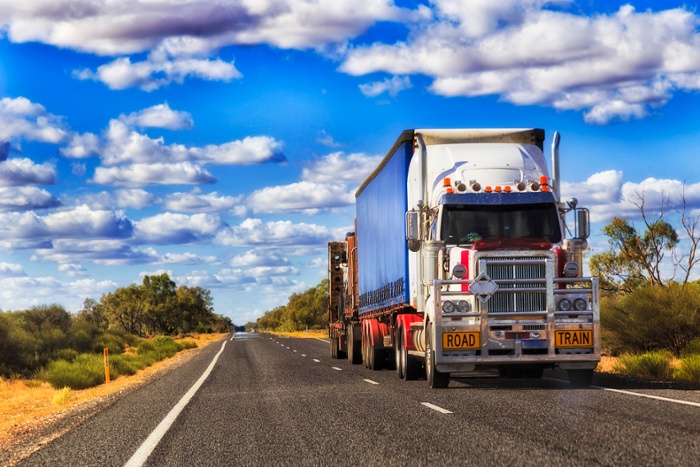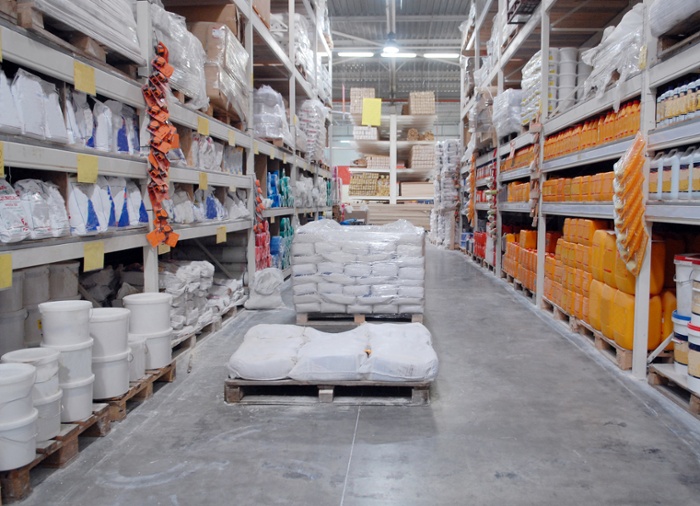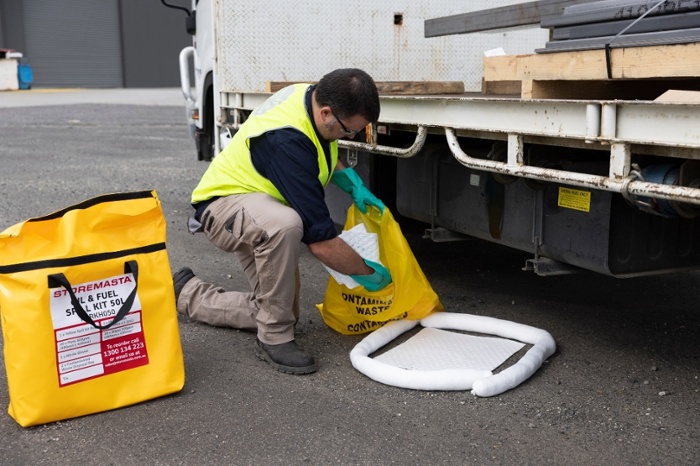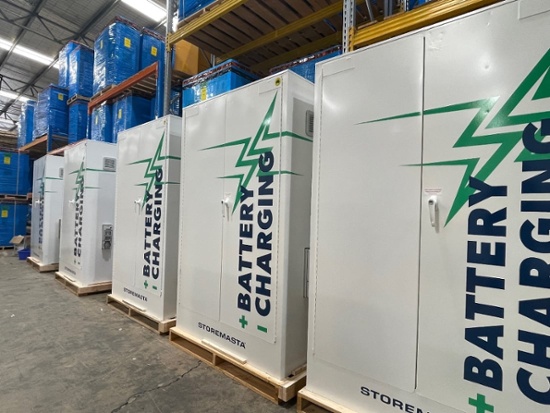Just like the slogan says, trucks really do ‘keep Australia moving’. The supply of petrol, fresh food, construction materials and medical supplies including pharmaceuticals all rely on road transport. In 2020, the trucking industry delivered more than 72% of Australia’s domestic freight - about four billion tonnes annually (1). That was forecast to grow by 80% between 2016 and 2040.
It is no wonder transport and freight companies and the government have increased focus and spending on safety measures to protect staff and the wider community in recent years.
An inescapable part of that is storing and managing the dangerous goods used by Australia’s 47,000 freight and logistics companies (1) as well as possible with effective and compliant engineering controls.

Dangerous goods, such as toxic or flammable chemicals, are both used and transported by the Australian transport sector.
Some of the dangerous goods commonly used in the transport industry include fuels, such as diesel, petrol, aviation fuel and other flammable liquids used to power vehicles and machinery. Chemicals such as cleaning agents, solvents and industrial chemicals are also used and stored.
The lead-acid and lithium batteries used in forklifts, tools and other equipment have specific storage requirements and recommendations. Compressed Gases like oxygen, acetylene, and carbon dioxide may also be used for welding, refrigeration and other applications. Many transport companies also use flammable aerosols such as spray paints, lubricants, and insecticides.

Everyday items, such as paints, aerosols or insecticides, are transported by road.
These dangerous goods and hazardous chemicals fall into various Classes in the Australian Dangerous Goods Code (ADG Code) and transport standards (2). The information in the ADG Code forms the basis of chemical safety guidance, including Australian Standards which specify the required storage solutions for dangerous goods. All chemical handling and storage equipment needs to be designed and constructed to meet the requirements of its dangerous goods class or subdivision to optomise health and safety (2).
The Australian Dangerous Goods Code: Requirements for Transporting Dangerous Goods
Transport companies don't only have to consider the requirements for the dangerous goods they use, but those they freight.
For example, the ADG Code requires every road vehicle transporting a placard load of dangerous goods to be equipped with: an emergency information holder; fire extinguisher; labels and emergency information panels that comply with the Australian Standard; as well as substance specific PPE and safety equipment in accordance with the ADG Code (2.1). All of these must be in good condition.
Unless otherwise specified, dangerous goods must not be offered for transport unless they have been properly classified, packed, marked, labelled and described on a dangerous goods transport document (2.2). The goods also need to be in a fit condition for transport with no residue from the dangerous goods adhering to the outside of the package.
Packages containing dangerous goods must only be loaded in strong cargo transport units that will also prevent the loss of contents (2.3). The Units must be loaded so that incompatible dangerous or other goods are segregated in accordance with Chapter 9.2 of the Code.
Controls for DG Used by the Transport Industry
Outdoor and fully relocatable storage units are some of the most common specialised products used by transport companies storing large quantities of flammable liquids. They provide protection in harsh environments and around moving machinery, and offer efficient, safe and compliant storage. Aerosol and gas storage cages as well as indoor chemical cabinets, floor bunds, spill kits, emergency showers and eyewash stations are also available to ensure dangerous goods safety.

As dangerous goods can leak and spill, you must provide a spill containment and clean-up system that allows for the safe disposal of the chemical and its waste.
Li-ion Batteries a Growing Risk
Electric vehicles and equipment, such as forklifts, pallet jacks, tools and cars are becoming more popular, efficient and commercially viable for businesses. Therefore, battery storage is becoming an increasingly common hazard in the workplace and incidents of thermal runaway resulting in workplace fires are on the rise.
In January 2023, ABC News published a report (3) on concerns over the growing number of fires linked to Li-ion batteries in devices such as e-scooters and e-bikes. There had been more than 450 fires linked to lithium-ion batteries over the 18 months prior according to data provided by state fire departments (3).
Luckily, there are now resources detailing the best practices for handling, maintaining and storing Lithium-ion batteries (4). Businesses, now realising the risk, have begun looking to engineering controls such as Storemasta’s Li-ion battery charging cabinets featuring fully certified electrical components.

The demand for safe lithium-ion battery storage is growing as the industry relies more and more on these energy sources.
Prioritising Safety for our Essential Workers
With peace of mind that their businesses are better protected, the transport industry can focus on getting Australia's goods get where they need to go. Like the 15,000 tonnes of food that is delivered each day in Melbourne alone (5).
The transport and logistics industry, including air, sea and rail, is not only vital to the supply of essential goods. It plays a vital role in the Australian economy, contributing around 8.6% to Australia’s GDP and employing 203,801 people as of February 2021 (1). In 2018-19, the total revenue for the industry was $71.7 billion with freight task increasing by 50% between 2010 and 2016 (1).
It is essential that Australia's valuable transport workers are protected and empowered to do their jobs with minimal risk to their health and safety. Avoiding catastrophe caused by improper storage and handling of dangerous goods will help ensure they get home safe each night.
To find out more about our solutions for the transport industry, visit our website or book an appointment online with our consultants.
References:
(1) Gitnux Australian: Transport Industry Statistics
(2) National Transport Commission: Australian Dangerous Goods Code https://www.ntc.gov.au/sites/default/files/assets/files/Australian%20Dangerous%20Goods%20Code%20-%207.8.pdf
(2.1) NTC ADGC: Chapter 12.1
(2.2) NTC ADGC: Chapter 7.1
(2.3) NTC ADGC: Chapter 8.1
(3) ABC: Concerns over … fires linked to lithium-ion batteries
https://www.abc.net.au/news/2023-01-18/e-scooter-lithium-battery-fire-risk-fears-/101863902
(4) Storemasta Blog
https://blog.storemasta.com.au/
(5) Freight Australia: Why We Need Action
www.freightaustralia.gov.au/what-is-the-strategy/why-we-need-action

Patrick Gee is Storemasta’s Content Creator and Marketer. With background in journalism, Patrick is passionate about using his communication and photography skills to help organisations find safe solutions for dangerous goods storage. His Instagram is filled with pictures of his dog Milo, along with his travels throughout Australia and overseas.